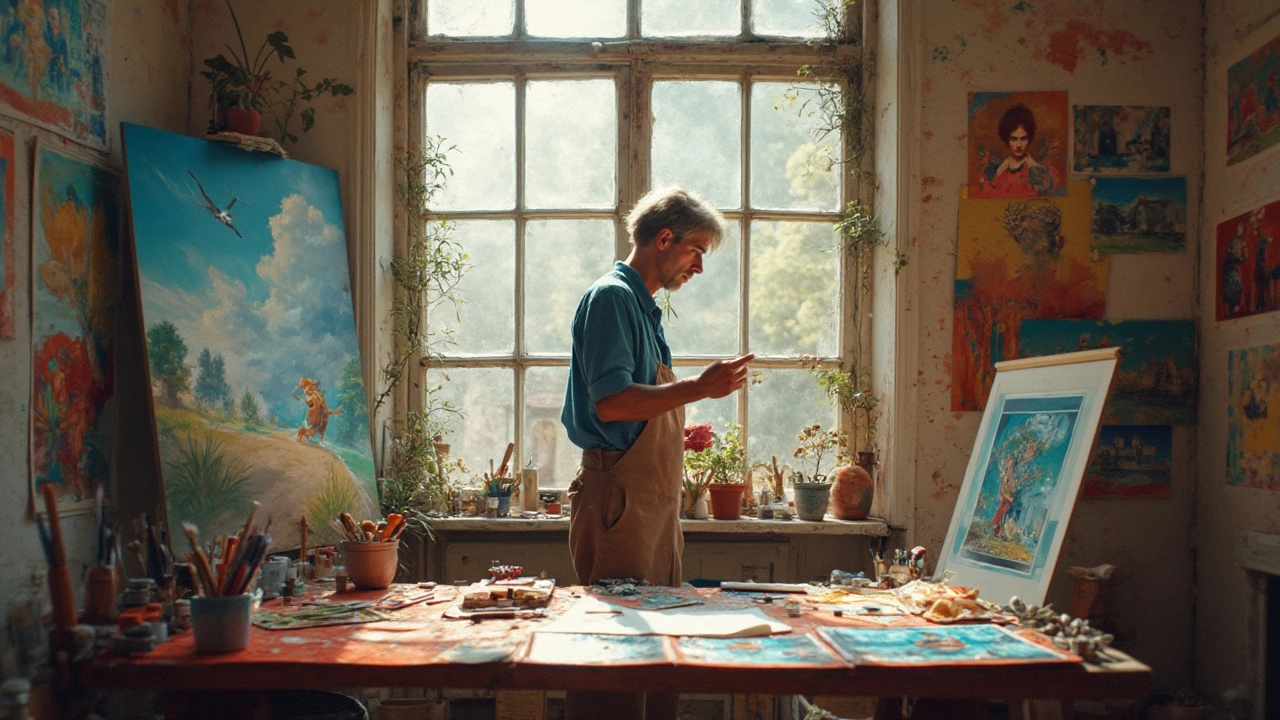Printing Techniques Every Artist Should Know
If you’ve ever wondered how a simple photograph turns into a museum‑grade print, the answer lies in the printing technique you pick. The right method can boost colour accuracy, durability, and overall impact, while the wrong one can ruin a masterpiece before it even hangs on the wall. Below, we break down the most popular techniques, give you practical tips, and show you how to avoid the usual pitfalls.
Digital Printing: Fast, Flexible, and Affordable
Digital printing is the go‑to for most modern creators because it works straight from a file to paper or canvas. You don’t need plates, screens, or long setup times, which means you can print one‑offs or small batches without breaking the bank. To get the best results, always use a high‑resolution (300 dpi or more) image and an RGB‑to‑CMYK conversion that matches your printer’s profile. Most printers recommend a matte or satin finish for art prints; glossy can look shiny but may create glare under gallery lighting.
One common mistake is ignoring colour management. If your monitor isn’t calibrated, the colours you see on screen won’t match the final print. A cheap colour calibrator can solve this in minutes. Also, avoid compressing your file too much – a JPEG saved at low quality will show banding and noise in the final piece.
Giclee and Inkjet Art Prints: Museum‑Quality on Demand
Giclee is a premium inkjet process that uses archival inks and specially coated papers or canvas. The name comes from the French word for “spray,” because the printer sprays microscopic droplets onto the surface, creating smooth gradients and deep blacks. This method is favored by photographers and fine‑art painters who need colour fidelity and longevity.
When ordering a giclee, ask the printer about the paper’s weight and coating. A 300‑gsm cotton rag paper gives a tactile feel similar to traditional fine art paper, while a semi‑gloss canvas can mimic a painted surface. Remember to let the print dry fully – at least 24 hours – before framing to avoid smudging.
Tip: If you’re printing your own giclee at home, invest in a professional‑grade printer that handles at least eight pigment‑based inks. This gives you a wider colour gamut and better fade resistance than dye‑based alternatives.
Screen Printing: Bold Colours and Textured Looks
Screen printing (or serigraphy) pushes ink through a mesh screen onto fabric, paper, or wood. It’s perfect for bold, flat colours, limited‑edition posters, and apparel. The process starts with creating a stencil for each colour layer, then lining up the screens precisely – a step called registration.
If you’re new to screen printing, start with a simple two‑colour design. Use a high‑mesh count (around 230) for fine details and a lower mesh (around 110) for thick areas. After each layer dries, you’ll need to clean the screen before the next colour, so keep a wet‑brush handy.
Common pitfalls include ink bleeding and misregistration. To prevent bleeding, make sure the ink’s viscosity matches the substrate – thicker for fabric, thinner for paper. Use a light table or a printed test sheet to check alignment before committing to a full run.
Choosing the Right Technique for Your Project
Think about the final use: Are you printing a limited‑edition art print for a gallery? Go with giclee on archival paper. Need a quick promotional flyer? Digital printing on matte stock works. Want a wearable design? Screen printing on cotton tees is the way.
Budget also matters. Digital prints can cost under £5 per piece for a small run, while a professional giclee may start at £20‑£30. Screen printing requires upfront costs for screens and inks, but bulk orders become cheap quickly.
Finally, test a small sample before launching a full series. A 5‑inch proof lets you see colour shifts, texture, and any registration issues. Adjust your file or settings, then move forward with confidence.
Printing techniques are tools, not mysteries. With a little practice and the right choices, you can turn any digital artwork into a physical piece that looks and feels exactly how you imagined. Ready to print your next masterpiece? Grab your file, choose the method that fits your vision, and let the ink do the talking.

4 Apr 2025
Discover the best printing techniques for art prints to enhance your artwork effectively. Learn about different methods like giclée, screen printing, and more, to find out which suits your artistic needs. Explore cost considerations, and understand how each technique impacts the final product. This guide helps artists choose the right printing to maintain quality and longevity while staying within budget.
Continue reading...
